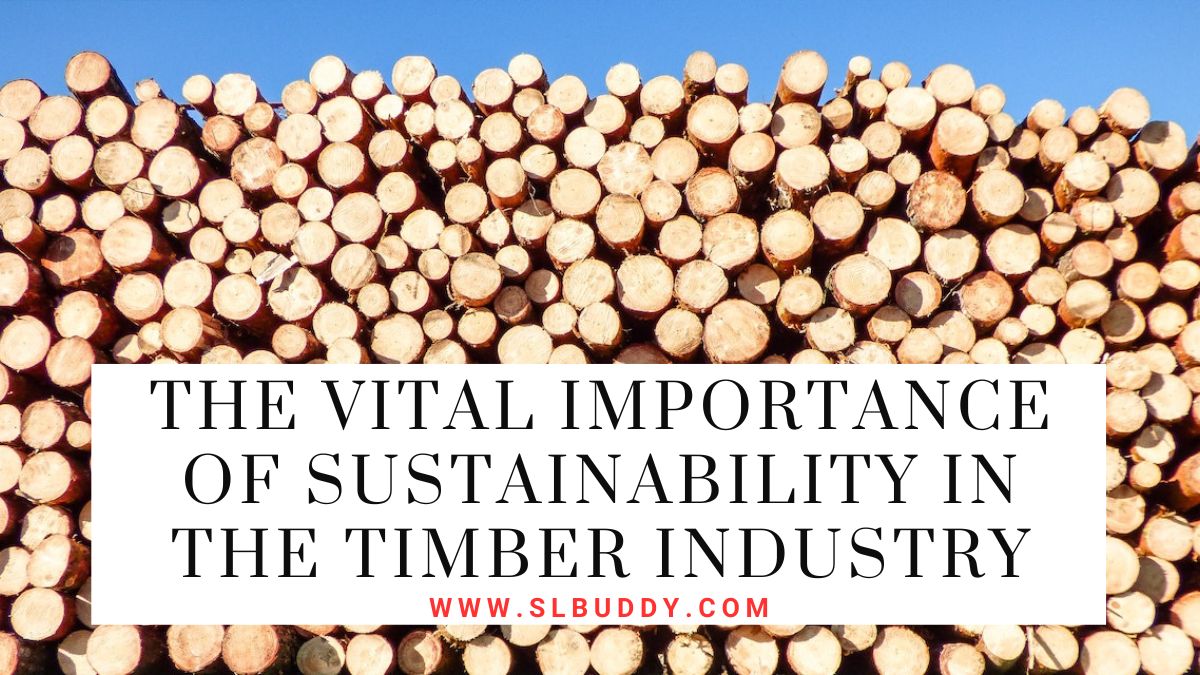
The timber industry, a crucial sector in the global economy, is deeply intertwined with our everyday lives.
From the wooden furniture gracing our homes to the paper we write on, timber’s ubiquity is undeniable.
However, this industry is far more complex than meets the eye. It is a delicate balancing act between providing these indispensable products and maintaining the health and longevity of our forests, which are vital for our planet’s survival.
The industry depends heavily on sustainable practices, without which the balance tips alarmingly towards environmental degradation.
Understanding the timber industry’s dynamics, the processes it employs, and its potential impacts, both beneficial and detrimental, is essential for anyone interested in the conservation of our natural resources.
Ecological Balance
Sustainable practices in timber production help preserve biodiversity, maintain soil quality, and ensure balance in the ecosystem.
The habitat of many species, including flora and fauna, is intricately linked to forests.
Logging, if done without sustainable practices in place, can lead to soil erosion, water contamination, and the loss of critical habitats for wildlife.
This not only disrupts the ecological balance but also has a cascading effect on other industries that rely on these resources. If we take a look at wood, for example, it is used in the construction industry, which is a major contributor to global carbon emissions.
By supporting sustainable timber production, we not only protect forests but also contribute to mitigating climate change.
Furthermore, sustainable timber production practices, such as reforestation and selective logging, help promote the growth of new trees, thereby aiding in carbon sequestration.
Climate Change Mitigation
Healthy, mature forests act as carbon sinks, absorbing CO2 emissions, which directly aids in mitigating climate change.
Unsustainable practices, such as clear-cutting and monoculture plantations, not only release large amounts of stored carbon into the atmosphere but also hinder forests’ ability to sequester more carbon.
As a result, supporting sustainable timber production helps maintain healthy forests that can act as a natural defense against climate change.
Sustainable forestry practices also include efficient use of resources and promoting renewable energy sources, which further contribute to mitigating climate change.
Most importantly, sustainable timber production is a step towards reducing our reliance on fossil fuels and promoting a greener, more sustainable future.
Preserving Resources for Future Generations
Sustainable forestry ensures that future generations also have access to timber resources and the various benefits forests provide.
By following sustainable practices, we can ensure the regeneration of forests and the responsible use of resources.
This also includes promoting fair labor practices and supporting local communities that depend on forests for their livelihoods.
Sustainable timber production supports a circular economy, where resources are used efficiently, and waste is minimized.
It also contributes to the creation of green jobs and promotes economic development while safeguarding natural resources for the future.
Most importantly, sustainable forestry ensures that we leave behind a healthier planet for future generations.
If we want to preserve our forests and the countless benefits they provide, supporting sustainable timber production is crucial.
Socio-Economic Benefits
Sustainability in the timber industry can contribute to economic sustainability, providing jobs and contributing to local economies while conserving the environment.
It also promotes responsible consumerism, where consumers can make informed choices and support companies that prioritize sustainability.
Companies that follow sustainable practices are often more resilient to economic downturns and market fluctuations.
Additionally, sustainable timber production also includes social considerations such as protecting the rights of indigenous communities and respecting their traditional knowledge and practices.
By supporting sustainable timber production, we can create a better world for both present and future generations.
Health of Indigenous Communities
Many indigenous communities depend on forests for their livelihood. Sustainable practices help protect these forests and, by extension, the people who live there.
Clear-cutting and other unsustainable timber production practices have a direct impact on the health and well-being of these communities.
They can lead to loss of land, displacement, and exposure to harmful chemicals used in conventional logging methods.
By supporting sustainable forestry, we can also support the preservation of traditional knowledge and cultural practices within these communities.
Furthermore, sustainable timber production can also provide alternative sources of income for indigenous groups, reducing their reliance on forest resources and promoting long-term sustainability.
Wildlife Conservation
Sustainable forestry practices help preserve habitats for various species, contributing to wildlife conservation efforts.
Forests are home to a diverse range of flora and fauna, many of which are endangered or threatened by habitat loss.
By promoting sustainable timber production, we can ensure the protection of these habitats and the preservation of biodiversity.
Sustainable practices also include measures to prevent illegal logging and trafficking of wildlife, further supporting conservation efforts.
In this way, the timber industry can play a vital role in protecting and preserving our planet’s wildlife.
Most importantly, by supporting sustainable practices, we can ensure that our forests continue to thrive and support all forms of life for generations to come.
Consumer Demand for Sustainable Products
Increasingly, consumers are becoming aware of sustainable practices and demanding products that align with their values.
This shift in demand can drive the timber industry towards more sustainable methods. By choosing to support companies that prioritize sustainability, consumers can play a crucial role in promoting sustainable forestry.
This can create a ripple effect, encouraging more companies to adopt sustainable practices and ultimately contributing to the preservation of our natural resources.
Most importantly, consumer demand for sustainable products can drive innovation in the industry and lead to more efficient and environmentally friendly practices.
Government Regulations and Incentives
Governments have a crucial role to play in promoting sustainability in the timber industry through regulations and incentives.
By implementing policies that prioritize sustainable practices, governments can support the industry’s transition towards more environmentally friendly methods.
This can include measures such as promoting reforestation and providing incentives for companies to adopt sustainable practices.
Governments can also enforce regulations to prevent illegal logging and promote responsible forestry practices, protecting both forests and the people who depend on them.
With government support, the timber industry can lead the way in promoting sustainable practices and contributing to a greener, more sustainable future for all.
Don’t miss: 8 Reasons Your Business Needs a Multilingual Marketing Strategy
The bottom line
Sustainability is vital for the timber industry, as it directly impacts the health of our planet and the well-being of its inhabitants.
By supporting sustainable timber production, we can ensure that our forests continue to thrive and provide us with essential resources while also mitigating climate change, preserving biodiversity, and promoting economic and social sustainability.
It is up to all of us, as consumers, companies, governments, and individuals, to prioritize sustainability in the timber industry and work towards a future where we can coexist with nature in harmony.
Let us take action now for a more sustainable tomorrow. We have the power to make a positive impact, and it starts with supporting sustainable practices in the timber industry.










